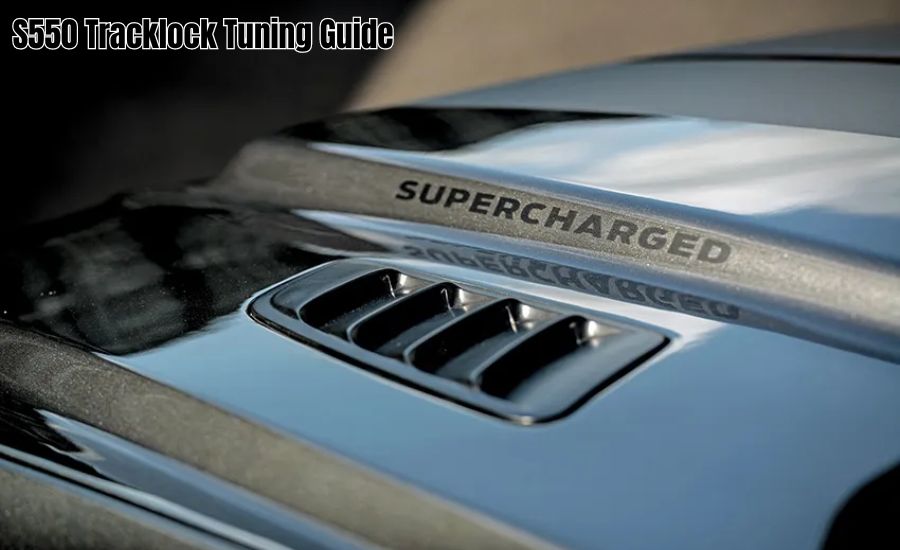S550 Tracklock Tuning Guide: Unleashing Your Mustang’s True Potential

Welcome to our comprehensive S550 tracklock tuning guide. This guide is designed to help you unlock the full potential of your Ford Mustang S550 through precise tracklock tuning. Whether you’re prepping for a track day or aiming to enhance daily driving, this S550 tracklock tuning guide will provide you with the insights needed for peak performance.
Understanding the S550 Tracklock System
Overview of the Tracklock Mechanism in the S550
In this S550 tracklock tuning guide, it’s crucial to grasp how the Tracklock system functions. The Tracklock system plays a vital role in enhancing traction and handling by controlling the locking behavior of the differential electronically. Understanding this mechanism is the first step in effective tuning as outlined in the S550 tracklock tuning guide.
Key Components of the Tracklock System
- Differential: The differential is a core component in the Tracklock system, allowing wheels to rotate at different speeds. In this S550 track lock tuning guide, we explore how the electronically controlled clutch pack adjusts the locking force.
- Axles: These are essential for transferring power from the engine to the wheels. This S550 tracklock tuning guide will discuss the importance of upgrading axles to handle the increased stress from the Tracklock system.
- Electronic Control Unit (ECU): The ECU processes inputs from various sensors to manage the differential’s locking behavior, a crucial part of the S550 track lock tuning guide.
Modes of Operation in the S550 Tracklock System

Default Mode: Open Differential
In the default open differential mode, as described in the S550 tracklock tuning guide, the system allows for independent wheel rotation. This mode is best for regular driving, providing a smooth experience while minimizing tire wear.
Enhanced Traction: Limited Slip Differential (LSD)
The LSD mode in the S550 tracklock tuning guide offers improved traction by providing limited locking force. This mode is beneficial for slippery conditions, enhancing control and stability during acceleration and cornering.
High-Performance Mode: Track Lock
For track enthusiasts, the Track Lock mode, as highlighted in the S550 tracklock tuning guide, provides maximum locking force between the wheels. This aggressive mode reduces wheel slip and maximizes traction, crucial for high-performance driving.
Benefits of S550 Tracklock Tuning
Enhanced Traction and Stability
Applying the S550 tracklock tuning guide can significantly improve traction and stability. Proper tuning reduces wheelspin during acceleration and improves cornering performance, leading to a more controlled driving experience.
Customization for Different Driving Conditions
- Dry Asphalt: The S550 tracklock tuning guide recommends medium to high locking force for optimal performance in dry conditions.
- Wet Asphalt: To prevent excessive wheel slip on wet surfaces, the guide suggests using lower to medium locking force.
- Low Grip Tracks: Moderate locking force, as per the S550 tracklock tuning guide, helps enhance traction and handling on tracks with low grip.
Techniques for Effective S550 Tracklock Tuning
Mechanical Adjustments
In the S550 tracklock tuning guide, mechanical adjustments are crucial for fine-tuning:
- Clutch Pack Adjustment: Modify the clutch pack to adjust the differential’s locking behavior, a key focus in the S550 tracklock tuning guide.
- Axle Upgrades: Consider upgrading axles to handle the increased torque and stress outlined in the S550 track lock tuning guide.
Software Calibration
- ECU Tuning: Adjusting the ECU settings is essential for fine-tuning the differential’s response, as detailed in the S550 tracklock tuning guide.
- Performance Maps: Creating specific performance maps helps tailor the system’s behavior for different driving scenarios, a technique covered in the S550 tracklock tuning guide.
Aftermarket Upgrades
- High-Performance Differentials: Upgrading to aftermarket differentials can enhance control and durability, as suggested by the S550 tracklock tuning guide.
- Track-Specific Components: Specialized components designed for track use can boost overall performance, as recommended in the S550 tracklock tuning guide.
Trade-offs and Considerations in S550 Tracklock Tuning

Balancing Traction and Handling
- Increased Locking Force: While it improves responsiveness, it can lead to higher tire wear and potential wheelspin on low-grip surfaces, as noted in the S550 tracklock tuning guide.
- Decreased Locking Force: Reducing locking force minimizes tire wear but may result in less responsive handling.
Risks of Aggressive Tuning
- Handling Unpredictability: Aggressive settings can cause oversteer or understeer, especially at high speeds or on slippery surfaces, as discussed in the S550 tracklock tuning guide.
- Component Wear: Increased stress from aggressive tuning can lead to premature wear or failure of parts, a concern highlighted in the S550 tracklock tuning guide.
Hope you find this interesting:
Recommended Settings for Various Conditions
Track Surface and Driving Scenarios
Based on the S550 tracklock tuning guide, here are suggested settings:
- Dry Asphalt: Use medium to high locking force for both acceleration and cornering.
- Wet Asphalt: Opt for low to medium locking force to control wheel slip.
- Low Grip Tracks: Apply moderate locking force to improve traction and handling.
Safety and Maintenance Tips
Ensuring Safety with Tracklock Tuning
- Gradual Adjustments: Start with minor adjustments to understand their impact on handling, as advised in the S550 tracklock tuning guide.
- Controlled Environment: Test new settings in a safe environment before taking them to the track.
- Awareness of Limits: Understand your driving skills and the car’s limits to avoid oversteering or understeering.
Regular Maintenance for Longevity
- Routine Inspections: Regularly check the Tracklock system for wear, damage, or loose components, a critical point in the S550 tracklock tuning guide.
- Lubrication: Ensure the system is well-lubricated to reduce friction and wear.
- Professional Assistance: Seek help from a qualified mechanic for complex adjustments and maintenance, as suggested in the S550 tracklock tuning guide.
Conclusion
This S550 track lock tuning guide has provided a thorough overview of optimizing your Mustang’s Tracklock system. By applying the techniques and recommendations in this guide, you can enhance your vehicle’s performance and handling. Always prioritize safety and regular maintenance to ensure your system remains in top condition.
FAQ
Q: What are the risks of aggressive tracklock tuning?
A: Aggressive tuning, as discussed in the S550 tracklock tuning guide, can increase tire wear and potentially damage the differential. It may also result in unpredictable handling, especially at high speeds or on slippery surfaces.
Q2: How often should I service my tracklock system?
A: Regular inspections are essential. As outlined in the S550 tracklock tuning guide, check differential fluid levels, inspect for leaks, and replace worn components as needed.
Q3: Can I tune the tracklock system myself?
A: While some basic adjustments can be made independently, advanced tuning often requires specialized tools and expertise. Consulting a professional tuner, as recommended in the S550 track lock tuning guide, is advisable for the best results.
Explore detailed insights and analyses on a wide range of topics at USA MAGENE







